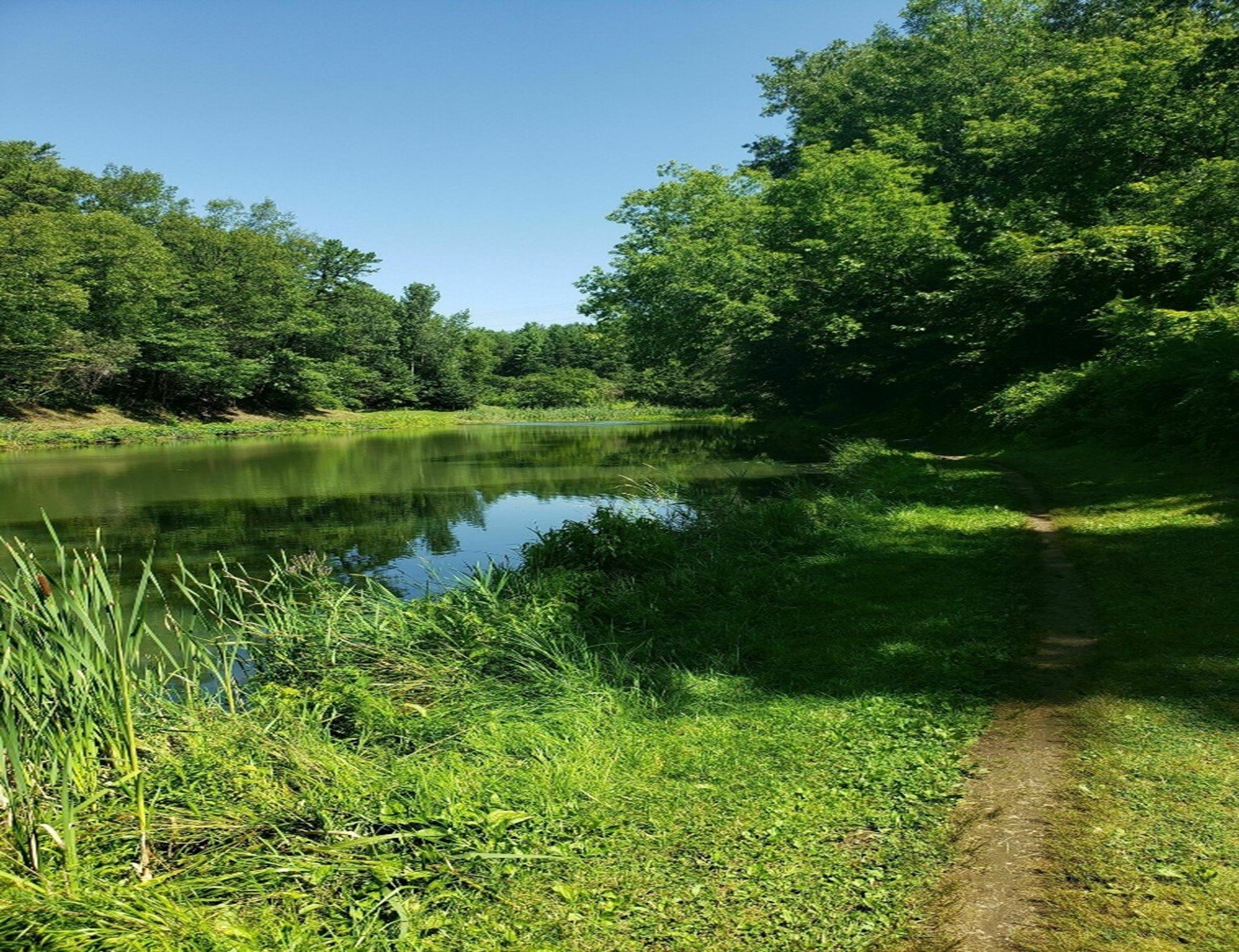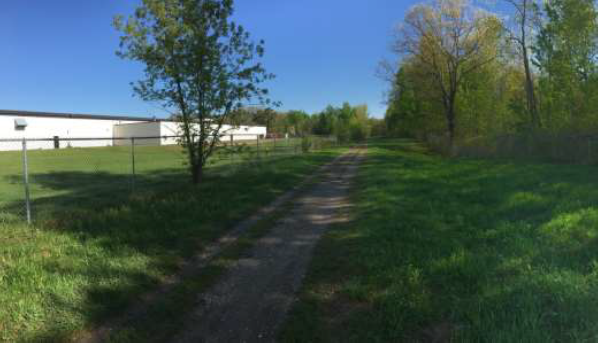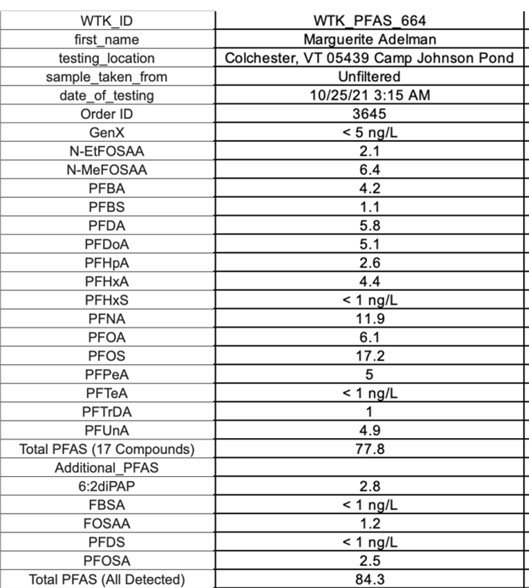Camp Johnson Army National Guard base in Vermont is contaminated with PFAS and refuses cleanup
The Army denies they caused the contamination and points to adjacent Champlain Cable Corporation.
Evidence suggests both parties are to blame.
By Pat Elder
November 17, 2021
This pond, 800 feet from the Army National Guard base, is highly contaminated with PFAS.
Environmental activists Marguerite Adelman and Robert Ackland, working with Military Poisons, found high levels of PFAS toxins in this pond located in the popular Gilbrook Nature Area of Winooski, Vermont. The site is about 800 feet southwest of the Camp Johnson Army National Guard Base. Last week, the couple reported high levels of the toxins in the Salmon Hole of the Winooski River.
The recent water test revealed 84.3 parts per trillion (ppt) of total PFAS with concentrations totaling 37.8 ppt for the five state-regulated compounds (PFOA, PFOS, PFHxS, PFHpA, and PFNA). Vermont regulates these five compounds at 20 ppt in drinking water and groundwater. See the full results below. The water test kit they used is manufactured by Cyclopure, a materials science company that has developed a novel cyclodextrin-based adsorbent, DEXSORB®, to cost-effectively remove PFAS from drinking water supplies.
Gilbrook Loop, shown in red, is a .9 mile trail located in Winooski, Vermont. The blue dot shows the location of the PFAS test. The site is 800 feet southwest of Camp Johnson and 1 mile south of the Champlain Cable Corporation.
In the April, 2019 Preliminary Assessment Report prepared by AECOM for the National Guard, the Army denies it has contaminated the installation and points to the Champlain Cable Corporation, (CCC), an adjacent property owner, for the PFAS contamination found on base.
The Army report states, “Based on the documented absence (1988-present) of the use or release of PFAS-containing materials at Camp Johnson, no “Areas of Interest” were identified during the Preliminary Assessment. Evidence does not indicate that current or former ARNG activities contributed PFAS contamination to soil, groundwater, surface water, or sediment at the facility or adjacent areas. Camp Johnson will not move forward in the CERCLA process.”
CERCLA is the Comprehensive Environmental Response, Compensation, and Liability Act, known as Superfund. Not moving forward with the CERCLA process means the PFAS contamination at Camp Johnson will not be investigated or cleaned up.
The Army says it looked around and there’s been no use of PFAS on base since 1988. A local fire chief confirmed that no fire training has occurred at Camp Johnson in his 30-year tenure.
Army facilities across the country generally began using PFAS foams in fire-training exercises in the early 1970’s and have used them until a few years ago. The toxins from that era are still with us and may be forever.
On November 27, 2019 Camp Johnson shipped 1,000 drum loads of aqueous film-forming foam (AFFF) containing PFAS for incineration at the Norlite Plant in Cohoes, NY. This fact challenges the Army’s assertion that there has been no use or release of PFAS-containing materials since 1988. Why would they have 1,000 drums loads of the stuff on hand?
It is disingenuous for the Army to walk away from the potential liability here. A robust investigation for PFAS on the base is warranted.
The Army has a convenient scapegoat in the cable company next door.
The AECOM report provides compelling evidence showing that Champlain Cable Corporation contaminated Camp Johnson with PFAS. “Between 1966 and 1977, liquid wastes were poured onto the ground outside of the building including along the roadway to the east of the facility and in an area to the northeast of the facility, referred to as the “sand pit.” The drainage area surrounding the south and west of the facility topographically slopes southeast towards Camp Johnson.”
Sunny Hollow Trail between Champlain Cable Company (left side of photograph) and Camp Johnson (right side of photograph). View to the north. Photo - AECOM, 2019
Heavy concentrations of PFAS have been found in groundwater on CCC’s property. Groundwater samples collected in August 2018 showed PFAS detections in 23 of 24 wells sampled at CCC, with PFAS compounds exceeding the 20 ppt Drinking Water Health Advisory in 22 samples. The highest total concentration of the five state regulated compounds (7,065 ppt) was detected in the “sand pit” area. It’s dangerous.
CCC manufactures wire and cable coatings for aircraft, computer, and energy industries. According to the AECOM report, “The waste products have historically contained lubricating solutions, degreasing solvents and liquid corrosives. These manufacturing processes have been found to use PFAS.”
The Army tested one surface water sample on base a half-mile south of the sand pit area. The site, on the base’s boundary, is 500 feet south of CCC’s property. The Army reported total concentrations of 19.33 ppt for the five state-regulated compounds (PFOA, PFOS, PFHxS, PFHpA, and PFNA).
The Army found 19.33 ppt of the five regulated PFAS compounds on base.
CCC holds a patent for wire insulation that contains an outer layer comprised of a fluoropolymer, or PFAS. There are thousands of companies like this that contaminate the American landscape with PFAS.
The AECOM report says groundwater data indicate a shallow water table may be 3 feet below ground surface and that shallow groundwater may discharge into surface water bodies at Camp Johnson, “such as the wetlands on the western boundary of the facility.” The Winooski couple gathered their sample in these wetlands.
See the PFC Investigation Summary Report on the Champlain Cable Corporation property by ATC Group Services in February, 2017. A map in the report shows sample area “SW-5” appears to be located on the boundary with Camp Johnson’s property. The surface water contained 190 ppt of PFOA and 12 ppt of PFOS, far eclipsing the state’s drinking water/groundwater standard of 20 ppt. The surface water flows north discharging into a tributary of the Winooski River.
Red dot - Test by ATC Group Services on the boundary between CCC & Camp Johnson, just north of CCC building. PFOS/PFOA = 202 ppt.
Yellow dot - Sole test by ARNG close to the boundary shows 19.33 ppt of the 5 regulated compounds.
Green dot - Military Poisons reports 84.3 parts per trillion (ppt) of total PFAS with 37.8 ppt for the five state-regulated compounds 800’ SW of the base.
Camp Johnson and the surrounding region could be very heavily contaminated and we wouldn’t know it because the Army is not being transparent. All runoff from the southern portion of the base drains into the Winooski River. It’s apparent that PFAS from the Army, the Air Force, and the local cable company empty into the river.
The Army has adopted an outrageous attitude regarding these chemicals. They’re the least transparent of the military branches in these matters and they have a swagger the other branches can’t match.
Consider this line from the ARNG report, “Camp Johnson site workers and construction workers may be exposed to PFAS contamination via ingestion of surface soil near the pond. Additionally, ground-disturbing activities to subsurface soil in the area could result in site and construction worker exposure to potential PFAS contamination via ingestions.”
Army Translation: You’d have to eat the dirt to get sick from this stuff.”
Consider this excerpt, “The primary exposure pathway for PFAS from groundwater would be through ingestion of drinking water; however, potable water at Camp Johnson is supplied to the facility by the CWD. The distribution system includes a main line that enters the CJ from the south. Groundwater from active CJ monitoring wells has not been analyzed for PFAS; therefore, it is unknown whether PFAS is present in groundwater. Because wells at CJ are not used as a drinking water source, the pathway for potential PFAS in groundwater to receptors via ingestion is incomplete.”
Army Translation: No one on the base could be harmed by this stuff.
“Although no receptors for PFAS exposure to groundwater via ingestion exist at CJ, residents using private potable wells near the CCC property may be exposed to PFAS in their drinking water. The table below summarizes the rationale used to determine that CJ should not be considered for further investigation under the CERCLA process and should not undergo a Site Inspection.”
Army Translation: Sure, locals with wells could be poisoned and so could the river and the aquatic life, but we’re going to close the investigation anyway. Besides, no one is paying attention.
PFAS foam flows from the Gilbrook Natural Area of Winooski to the Winooski River in Vermont.
PFAS Testing Results - Gilbrook Pond








